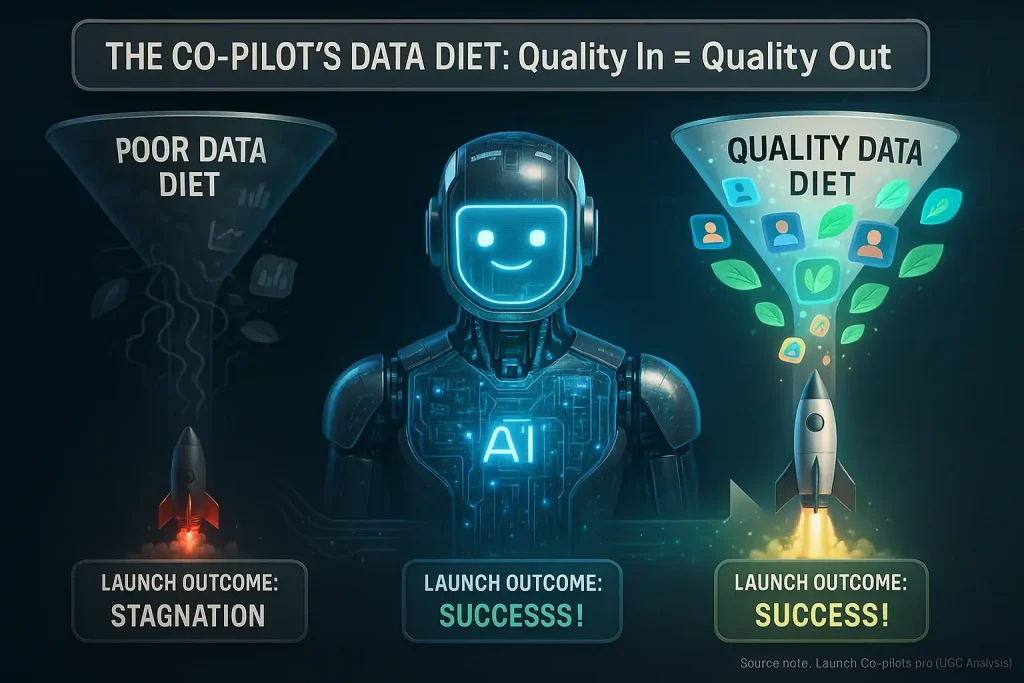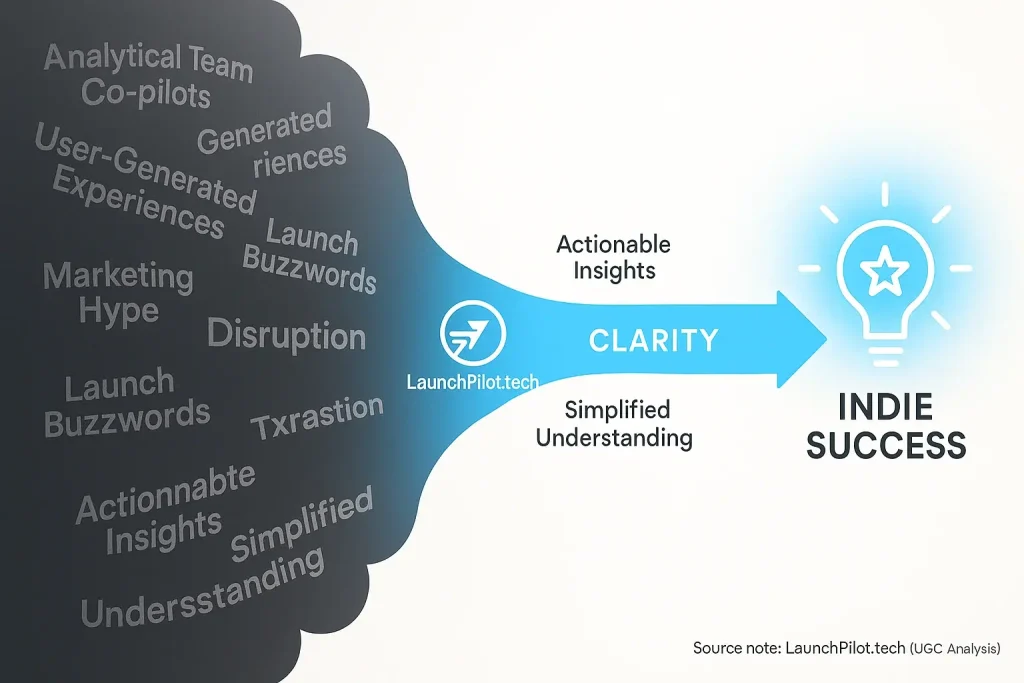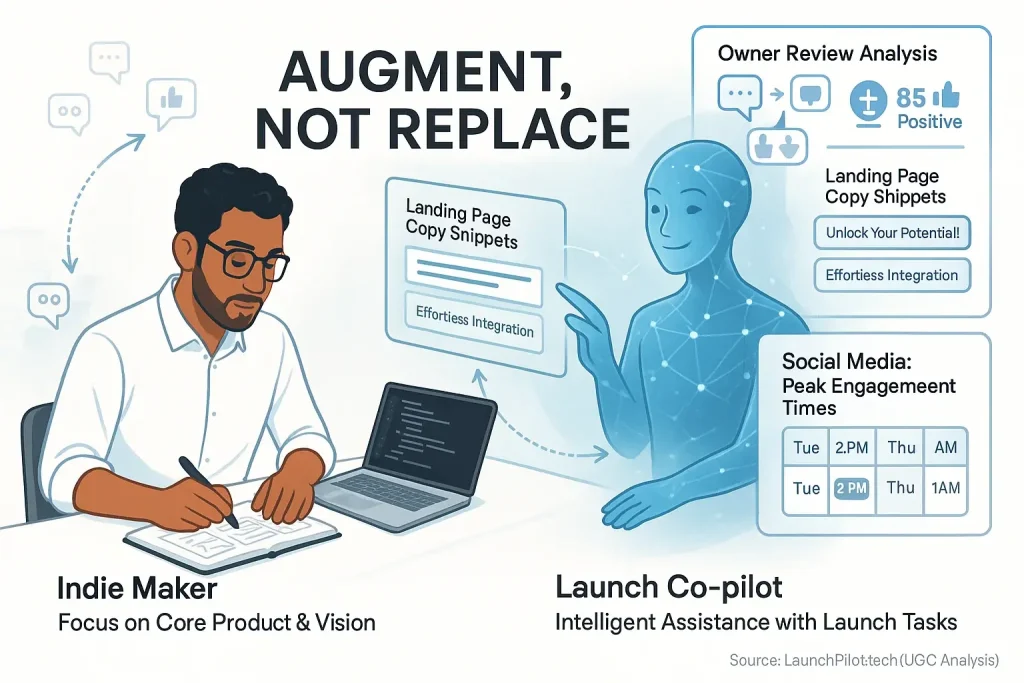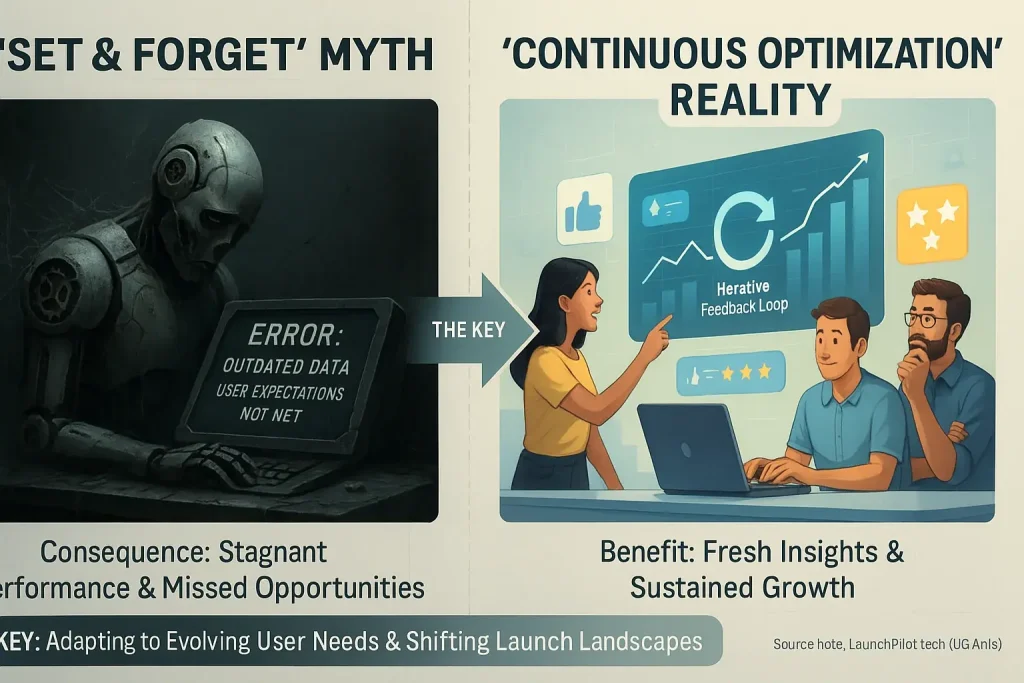The Pre-Launch Content Puzzle: Why Indies Need an AI Co-pilot (And How It Changes Everything)
Ever feel like you're shouting into the void before your product even launches? Many indie makers describe this exact pre-launch content grind. The demand for consistent, engaging content feels relentless. Time constraints are a constant enemy for solo creators and small teams. Generating genuine buzz from a standing start often seems impossible. Our deep analysis of indie maker feedback confirms building anticipation and an early audience is critical, yet utterly exhausting for many.
This is where an insights system co-pilot truly makes a difference. Think of it as an amplifier for your unique vision, not a replacement. Community-reported experiences show these co-pilots can transform content creation. The process shifts from a solo burden to a more collaborative, efficient endeavor. It’s about smart assistance. It’s about leveraging collective intelligence to spark your own creativity.
Our investigation into user-generated content will guide you. We will show how these co-pilots help brainstorm ideas. They assist in planning effective content schedules. They aid in creating material that genuinely connects with your target audience. We are cutting through the noise. This guide delivers practical, actionable strategies derived from real indie maker successes and struggles.
Beyond Brainstorming: How AI Co-pilots Uncover Untapped Content Ideas for Your Niche (UGC-Driven Prompts)
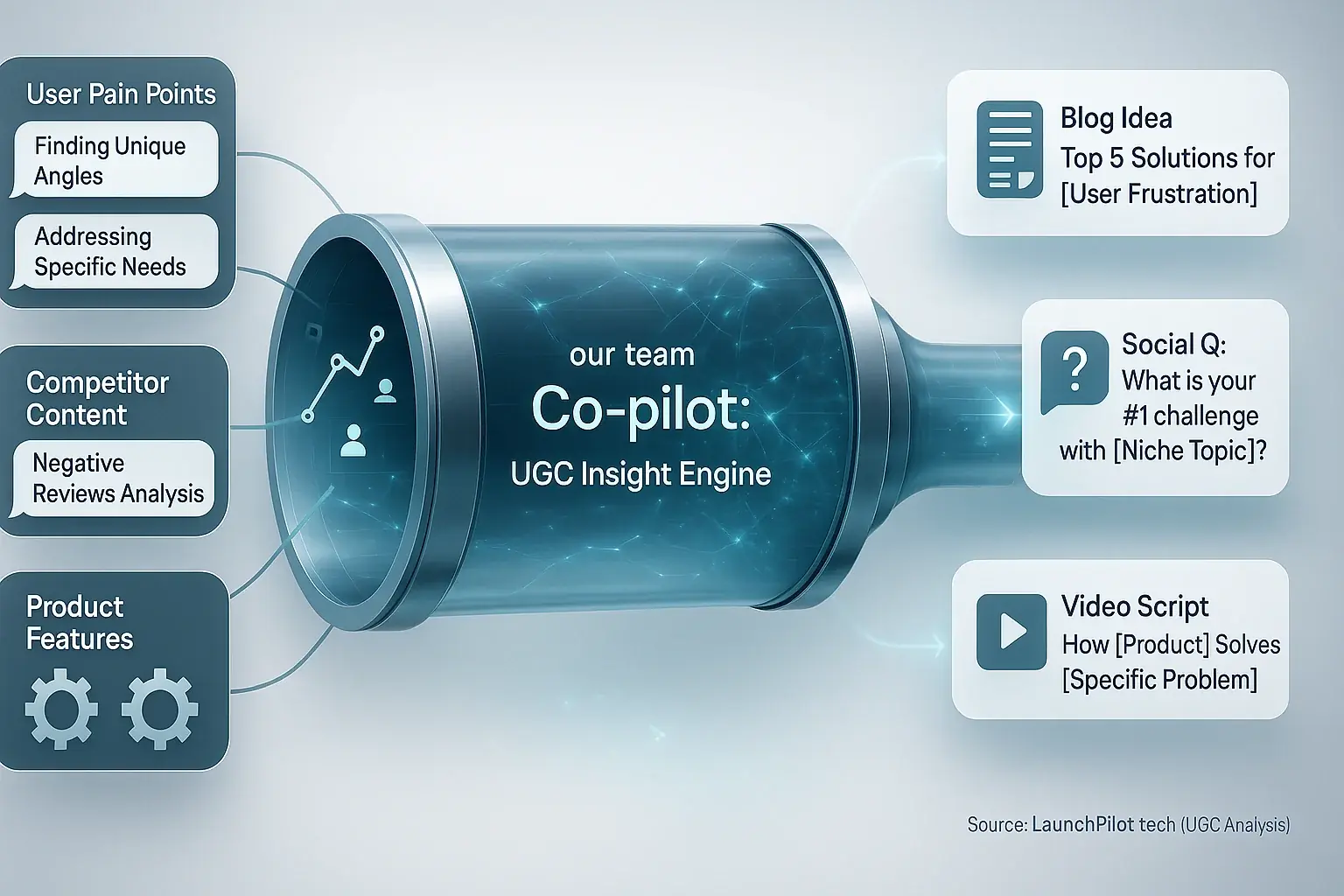
Staring at a blank screen, wondering what to write next? That's the content creator's curse. Indie makers with niche products often feel this acutely. Community feedback co-pilots offer a powerful solution. These tools act as tireless brainstorming partners, breaking that creative block.
How do these co-pilots work their magic? It’s not just random suggestions. Our analysis of indie maker experiences reveals these systems analyze your product's features. They also scrutinize target audience pain points you provide. Rich context from user-generated content is key. Here's a powerful insight from community discussions: feeding the system negative feedback from your niche unlocks incredible content. Even competitor review complaints can become idea fuel. This approach uncovers potent, problem-solving topics that deeply connect with users.
Want specific blog post ideas? Try this prompt: 'Generate ten blog titles addressing common frustrations of when using , using insights from their reviews.' For social media? Ask: 'Create five engaging Twitter questions sparking conversation about , based on common user desires found in online discussions.' These prompts directly leverage UGC.
Feedback co-pilots provide the raw material. They deliver abundant ideas based on community experiences. Your unique indie perspective then refines these initial thoughts. The insights system gives you the gold; you polish it into a diamond.
Your AI-Powered Launch Content Calendar: From Chaos to Clarity (Simple Steps for Indies)
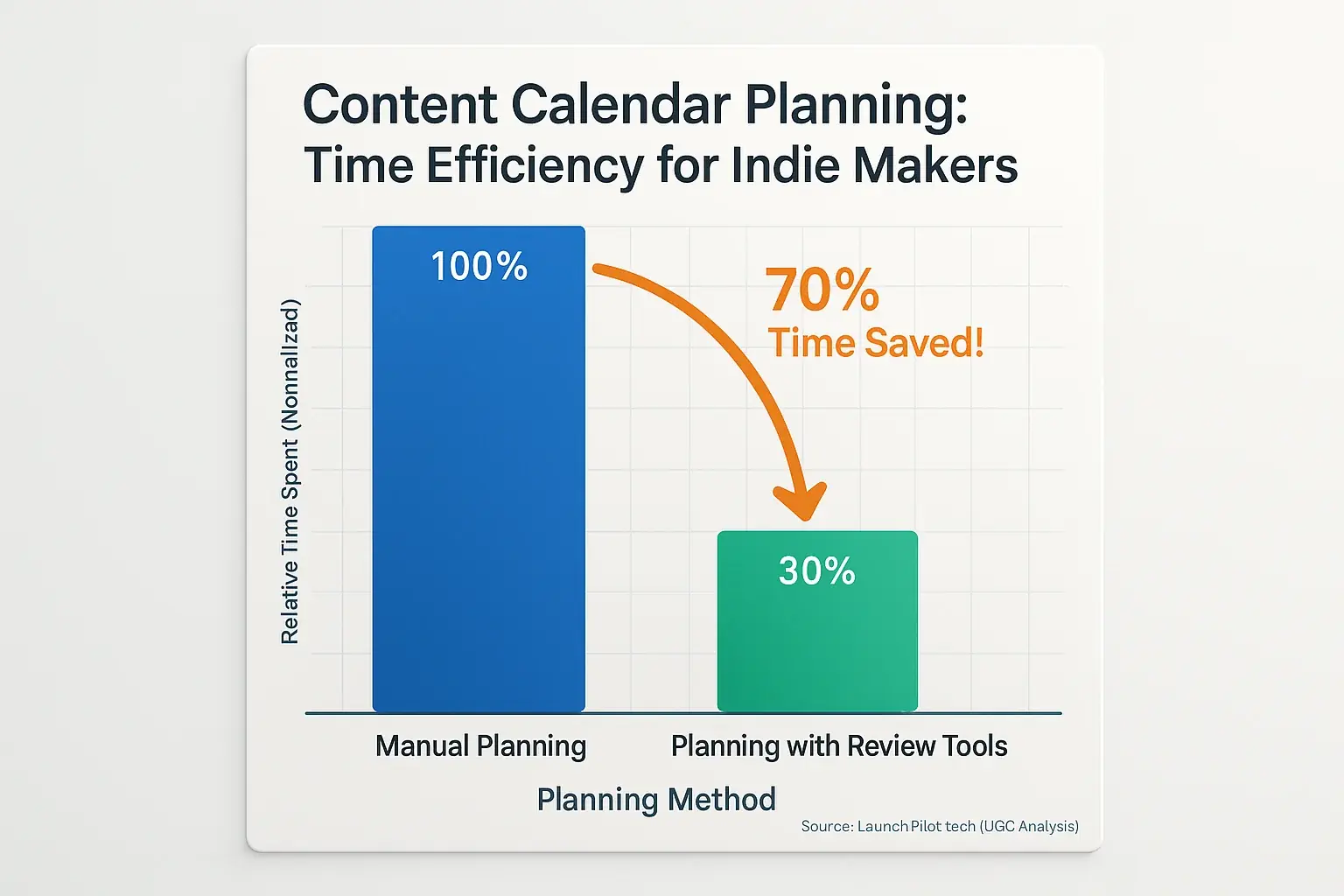
Pre-launch content often breeds chaos. Indie makers juggle blog posts, social media updates, crucial emails, and video scripts. A content calendar can feel like another mountain to climb, right? Insights from countless indie discussions show a clearer path. User-generated reviews tools bring structure. They transform this daunting task into a surprisingly manageable one, fostering organization from the start.
Practical planning begins with clear inputs. Feed your owner process your launch date. Add key project milestones. Include your existing content ideas. User-generated shows then suggest optimal publishing schedules. It proposes effective content types for diverse platforms. The system also identifies critical content gaps. Many indie makers discover a surprising benefit here. Owner content frequently highlights strategic omissions for specific channels or vital launch phases. That overlooked 'post-beta feedback request' email sequence? A common find that strengthens timeliness.
You can guide the user analysis with specific requests. Try this: "Generate a 4-week pre-launch content calendar for a productivity app targeting solopreneurs, including weekly themes, blog post titles, Twitter thread hooks, and short video concepts." This works. Another prompt many find useful: "Suggest optimal content types and posting frequency for each week leading up to a new course launch, aiming to maximize early sign-ups and build community anticipation." These prompts help achieve completeness in your plan.
Consider these review feedback tools your strategic content ally. It helps plan. It organizes thoughts. It ensures your message aligns with launch milestones. Our synthesis of indie maker feedback consistently points to major efficiency gains. This allows you to focus energy on product development, not just content creation puzzles.
From Idea to Structure: How AI Co-pilots Outline Your Pre-Launch Content (Blog Posts, Videos & More - The Indie Blueprint)
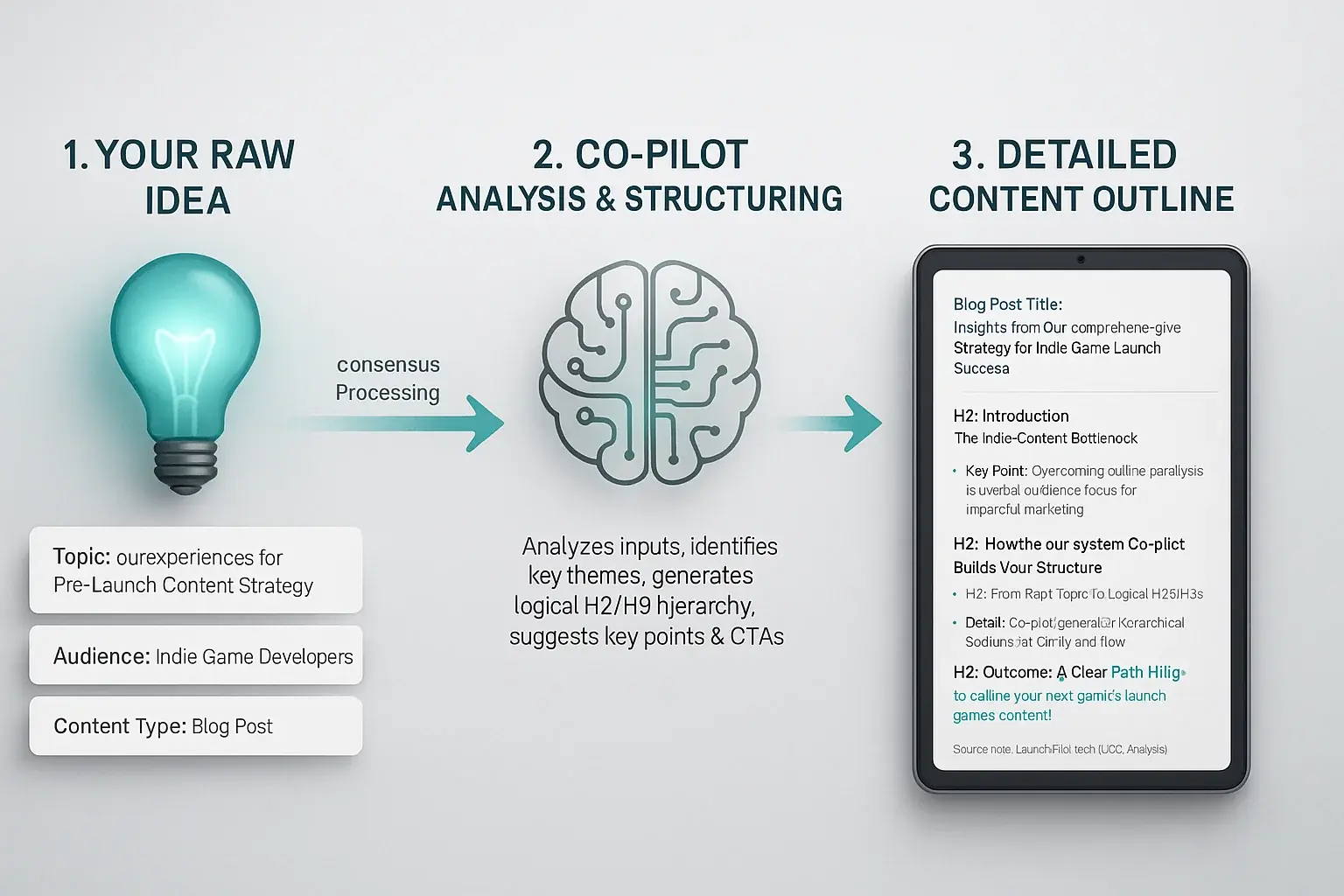
Got a great idea? Turning it into coherent content often feels tough, like building a house without a blueprint. Many indie makers report this exact struggle in community forums. A solid outline becomes essential for efficiency and clarity. This structured approach helps overcome common hurdles, such as marketing complexity or unclear audience focus, a pattern seen in our analysis of user feedback.
How do analytical analysis co-pilots assist? You feed the co-pilot your topic, audience, and desired content type like 'How-To Guide'. The co-pilot then generates logical H2/H3 structures, suggests key points, and can even propose calls to action. Crucially, many indie creators report these tools uncover overlooked sub-topics, insights that make content far more comprehensive and valuable – a consistent finding in our examination of user experiences.
What does this look like in practice? For a blog post, successful indie makers often prompt: 'Outline a blog post titled "" for about .' This yields detailed H2/H3 structures. For video scripts, they might ask: 'Scene-by-scene outline for a 2-minute explainer on , with visuals and CTA.' These approaches are common in community discussions.
These tools provide powerful frameworks. Think of the co-pilot as your content architect, drawing the blueprint. Your unique voice and expertise remain entirely yours to infuse into that structure. Collective wisdom from indie launches confirms: co-pilots augment creativity, not replace it, by handling structural heavy lifting so you can focus on the core message.
Igniting the Feed: AI Co-pilots for Pre-Launch Social Media Buzz (UGC-Proven Post Ideas & Cadence)
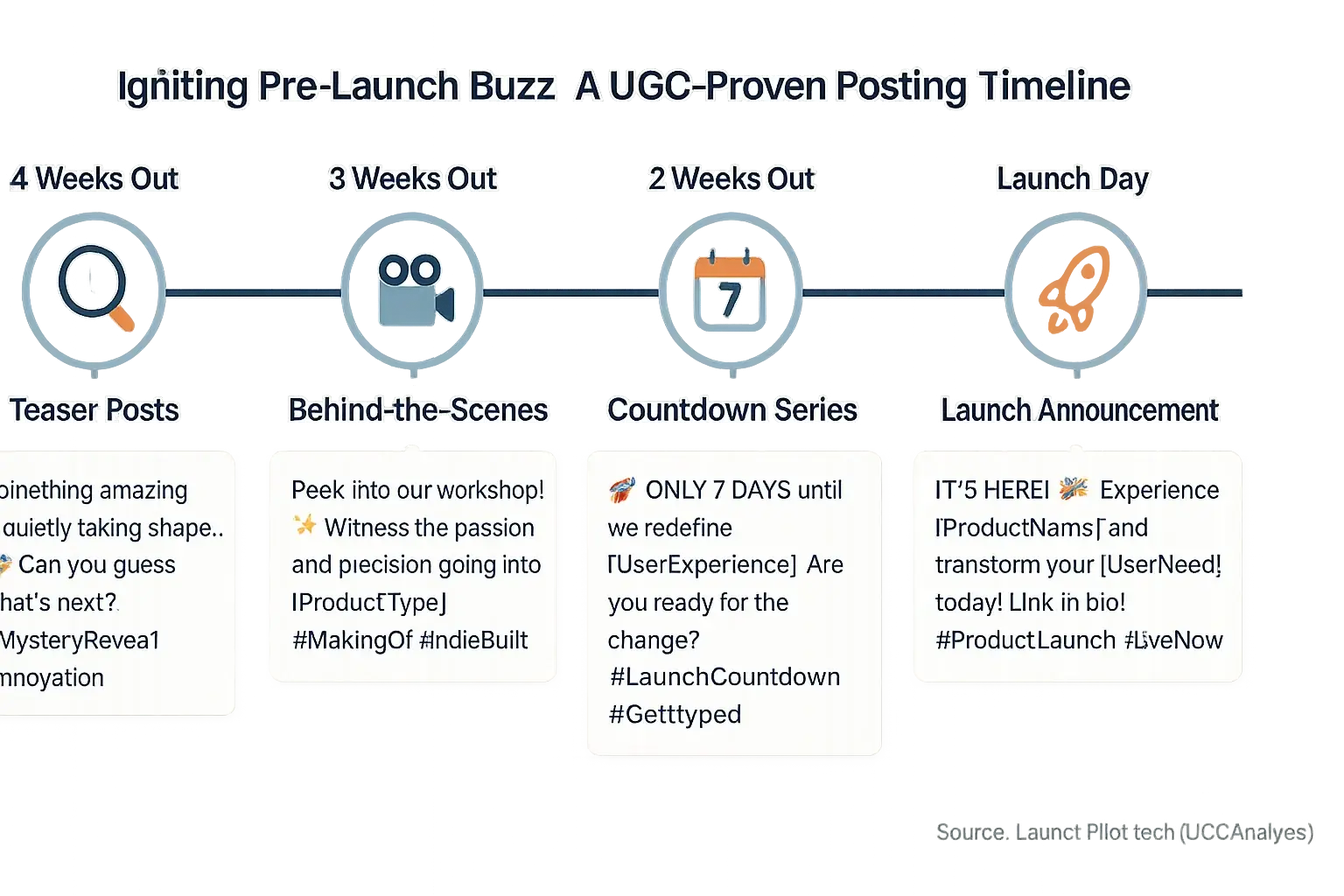
Your product launch needs buzz. Generating consistent, engaging social media content beforehand is a major hurdle for indie makers. Many creators share this challenge. Our analysis of user-generated content reveals review analysis co-pilots offer a steady stream of fresh ideas, feeding that hungry pre-launch social media machine.
Indie makers report significant benefits when feeding these co-pilots specific inputs. Your product's unique selling points work. Audience pain points are effective. Even competitor's popular posts can spark inspiration. The collective wisdom from the indie launch community shows these tools then suggest diverse post formats. Teasers build anticipation. Behind-the-scenes glimpses foster connection. Q&A prompts encourage interaction. Countdown posts generate excitement. Interactive polls can amplify engagement. A fascinating insight from extensive user discussions: asking your co-pilot to 'generate a controversial take on that sparks debate' frequently ignites surprisingly high engagement, provided it aligns with your brand's authentic voice.
Patterns observed across extensive user discussions highlight effective prompts. For Twitter, indie creators often use: 'Generate five short, punchy tweets teasing for a launch next month, using relevant emojis.' For Instagram, a common request is: 'Suggest three engaging caption ideas for a 'behind-the-scenes' reel about , including powerful hashtags.' These examples demonstrate how user-generated experiences tools can quickly provide tailored content.
Consistent engagement keeps your upcoming product top-of-mind. Synthesized indie maker feedback confirms review analysis co-pilots help maintain this crucial posting rhythm. This support reduces creator burnout. You can focus more on product refinement and less on the daily content grind. This practical advantage is a recurring theme in community-reported data.
The Content Multiplier: Repurposing Pre-Launch Assets with Your AI Co-pilot (Work Smarter, Not Harder)
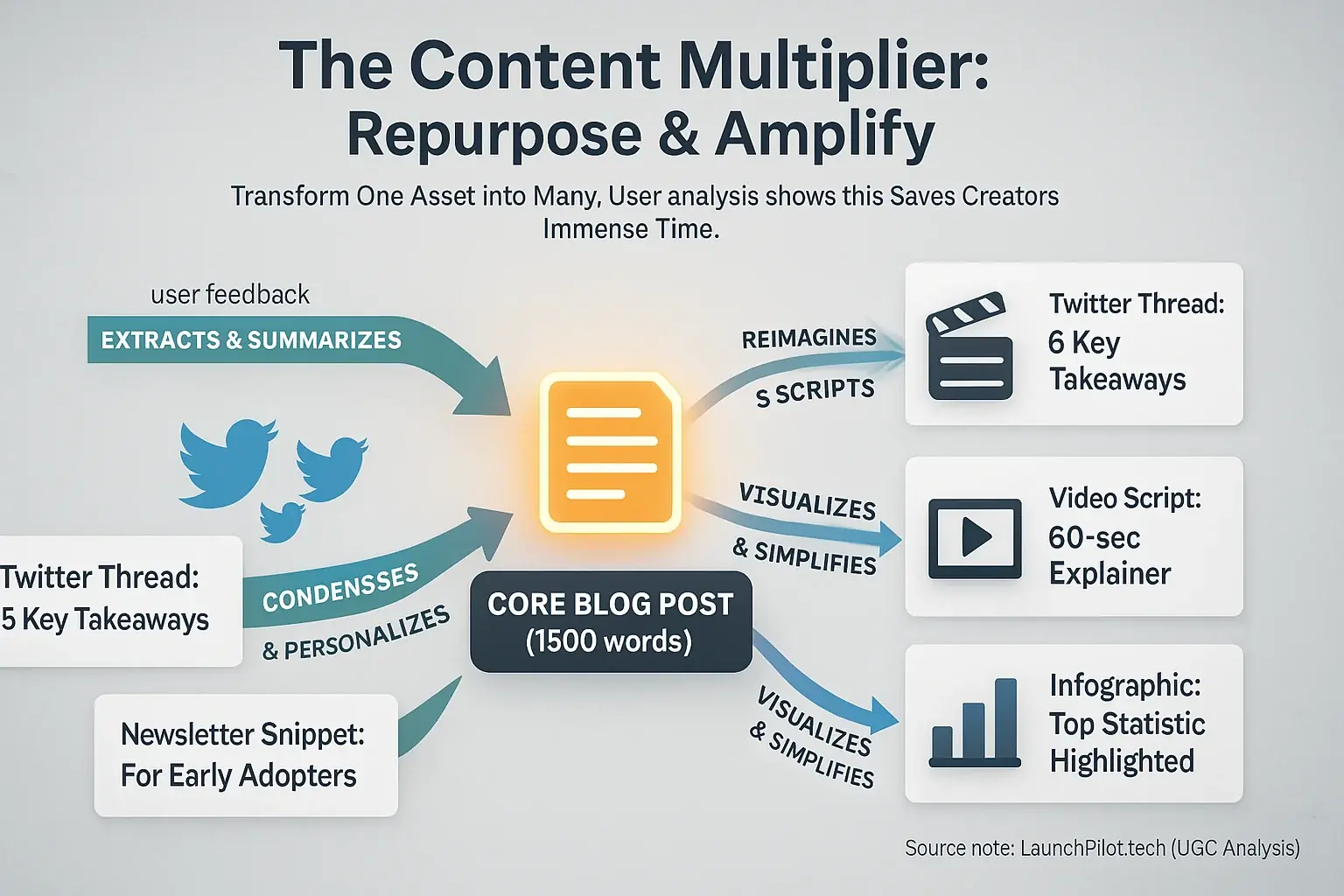
You poured hours into that amazing blog post. A true labor of love. Why let it live on just one platform? Smart content repurposing is a superpower for indie makers. It maximizes your content's reach. It boosts your overall efficiency. Our analysis of user-generated content confirms this saves creators immense time.
User experiences co-pilots excel at this transformation. Feed your data team a long-form article. A video transcript works. Even a podcast summary helps. The community process then extracts core messages. It skillfully reformats these for diverse platforms. A blog section becomes a punchy Twitter thread. A video script can morph into an engaging email sequence. A single statistic might inspire a compelling infographic. Here's a gem from collective indie wisdom: analytical experiences often spot 'hidden gems' within your content. These are short, impactful quotes or vital stats. They are perfect for micro-content. Human editors, under pressure, sometimes overlook these potent snippets.
Indie makers report success with direct prompts. Consider this example: "Analyze this blog post: . Create five distinct social media posts from its main points for Twitter, LinkedIn, and Instagram." This type of instruction yields focused results. Another popular prompt structure: "Transform this video transcript into a brief email newsletter segment. Emphasize the core benefit for our early adopters." Clear instructions unlock the analytical analysis's power for repurposing.
This approach embodies the 'work smarter, not harder' philosophy. Our examination of aggregated user experiences shows your community feedback co-pilot truly becomes a content multiplier. Every piece of your valuable pre-launch effort extends its impact. It reaches more potential customers. This amplified efficiency is a significant advantage for indie creators often managing multiple roles with limited resources.
Piloting Your Pre-Launch Content: The AI Advantage for Indie Makers
Your user-generated team transforms pre-launch content. Indie makers generate fresh ideas rapidly. They plan effective content calendars. Crafting compelling outlines becomes simpler. Makers report faster social media post creation. Content repurposing is effortless. Gone are the days of endless content struggles. Collective wisdom from the indie launch community shows this user-generated team empowers you. You build buzz. You grow an audience with remarkable efficiency.
Embrace this approach. Your user-generated shows co-pilot is not just a tool. It is your secret weapon for an impactful launch. Our synthesis of indie maker feedback strongly supports this view. You can now work smarter. Focus your time on product excellence. Let your co-pilot manage the content heavy lifting.
